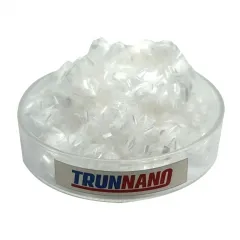The main channel of high strength and high modulus PVA fiber
- Large-volume concrete pouring, such as docks, high-rise building conversion beams, columns, floor slabs, etc.
- Roof treatment, basement and wall plastering mortar for industrial and civil buildings.
- Pavements and guardrails of roads and bridges.
- Concrete pouring for dams, pools, parking lots, stadiums, etc.
- Make concrete components, pipes and plates.
- Shotcrete for tunnels, mines, trenches, slopes, etc.
- Coastal beaches, saline-alkali zones, and chemical corrosion sites.
- Replace asbestos and make asbestos cement products.
- Make lightweight wall panels, GRC boards, insulation boards and other building materials.
The main purpose of adding polyvinyl alcohol fiber to concrete
It has the advantages of strong crack resistance, impact resistance, high wear resistance, and good affinity with cement, which can increase the strength of components and extend the service life. It overcomes concrete shortcomings such as low tensile strength, low ultimate elongation, and brittleness. It has excellent tensile strength, bending resistance, shear resistance, crack resistance, fatigue resistance, high toughness and other properties. It is divided into polypropylene fiber and polyvinyl alcohol fiber due to its different raw materials. Crack-resistant fiber has obvious engineering use Performance; it can greatly improve the crack resistance, wear resistance, flexural strength and demolition resistance, impact resistance and fatigue resistance, and anti-permeability of concrete, especially the toughening effect of high-strength concrete.
Functional characteristics of high strength and high modulus PVA fiber
- It is non-toxic, harmless, safe and reliable and does not cause harm to the environment and construction personnel.
- It has a good affinity with cement and strong gripping power.
- Good dispersion, no adhesion, easy to disperse.
- The construction is simple and economical.

How to use high strength and high modulus PVA fiber
- Accurately weigh the fiber according to the designed addition amount and the amount of concrete mixed each time;
- After the sand and gravel materials are prepared, add the fiber, then add the aggregate together with the fiber into the mixer, add water and stir (you can also add the fiber to the water first, stir and disperse, and then add it from the mixer to mix with the aggregate).
- Take random samples after mixing. If the fibers have been evenly dispersed into single filaments, the concrete can be used. If there are still bundles of fibers, extend the mixing time by 30-60 seconds, and it can be used.
- Fiber-added concrete’s construction and maintenance process is exactly the same as that of ordinary concrete.
- Product dosage
Generally speaking, for plain slurry or mortar and fiber-reinforced cement slabs and corrugated tiles, the dosage range is 0.6-1kg/m, and the commonly used dosage is 0.6kg/m; for concrete, the dosage range is 0.6-1.9kg/m. The commonly used dosage is 0. 9kg/m.
Precautions for using high-strength and high-modulus PVA fiber
- Add fiber and keep the original proportion of concrete unchanged.
- When adding fiber, construction and maintenance should still be carried out strictly with relevant national regulations.
- People with skin allergies should try to avoid direct skin contact. If slight skin irritation occurs, please rinse with water.
- This product is non-toxic, has a specific gravity of 1.3, and has a melting point above 216°C, so it is highly safe to use.

The difference between polyethylene fiber and polyvinyl alcohol fiber
- Different sources
Polyethylene fiber is a synthetic fiber made from polyethylene through spinning processing. It is mainly used to make textiles, ropes, industrial yarns, etc. Polyvinyl alcohol fiber is an artificial fiber made from polyvinyl alcohol (PVA) through hydrolysis and spinning. It is mainly used to make base fabrics, filter materials, reinforcement materials, etc.
- Different physical properties
Polyethylene fiber has good mechanical properties and wear resistance, but its heat resistance and light resistance are poor. PVA fiber has good heat resistance and light resistance, but its mechanical properties and wear resistance are better than polyethylene fiber. In addition, polyvinyl alcohol fiber has good solubility and is easily soluble in water, while polyethylene fiber is not easily soluble in water.
- Different application scopes
Due to differences in their physical properties, polyethylene fibers and polyvinyl alcohol fibers have significantly different applications. Polyethylene fiber is widely used in textiles, construction, packaging and many other fields, such as making ropes, mesh cloth, sportswear, etc.; In contrast, polyvinyl alcohol fiber is mainly used in insulation materials, filter materials, medical textiles, etc., in the construction industry.

Supplier
TRUNNANO is a supplier of PVA fiber with over 12 years experience in nano-building energy conservation and nanotechnology development. It accepts payment via Credit Card, T/T, West Union and Paypal. Trunnano will ship the goods to customers overseas through FedEx, DHL, by air, or by sea. If you are looking for high quality PVA fiber, please feel free to contact us and send an inquiry.
